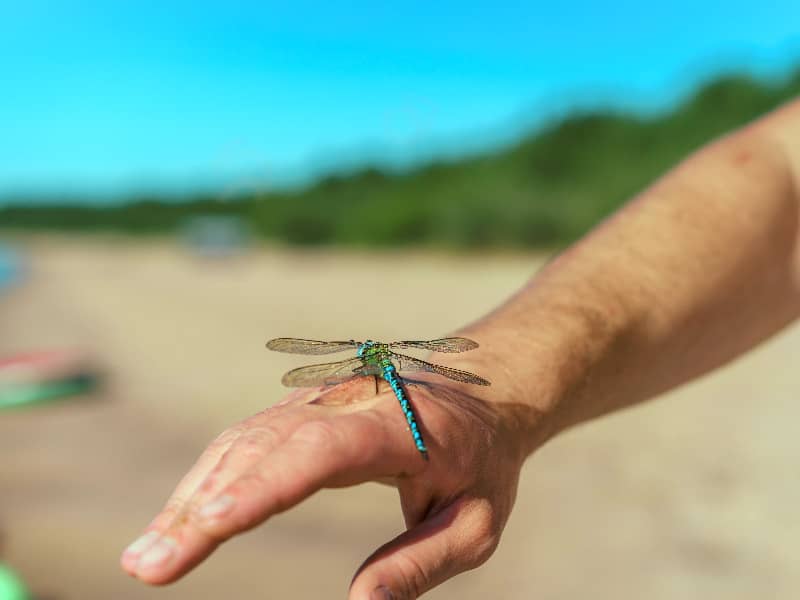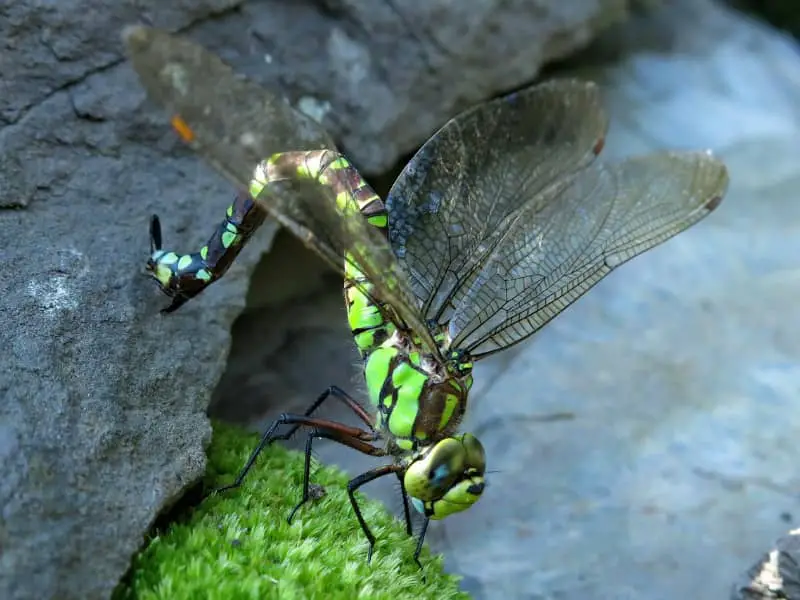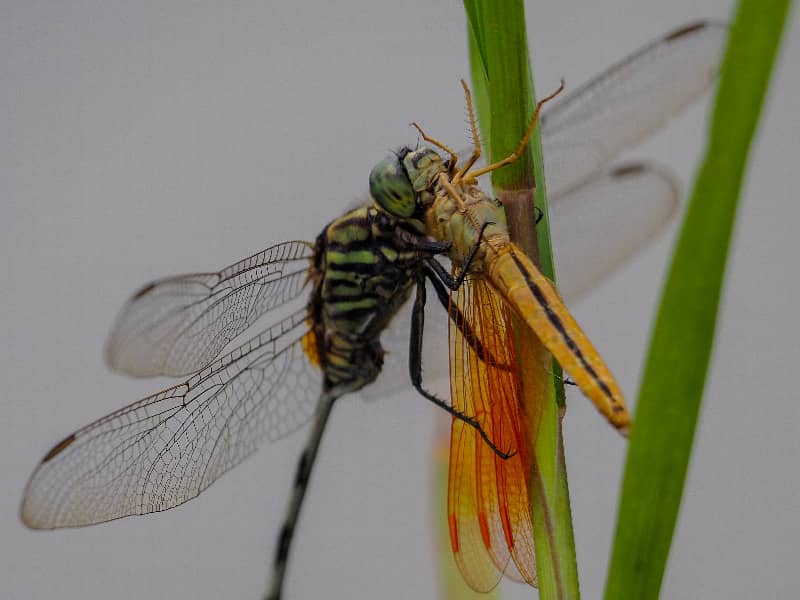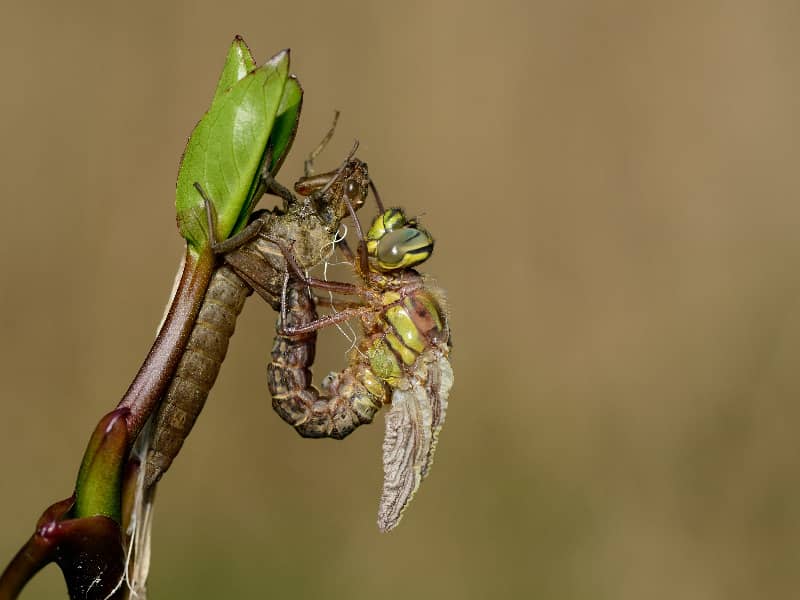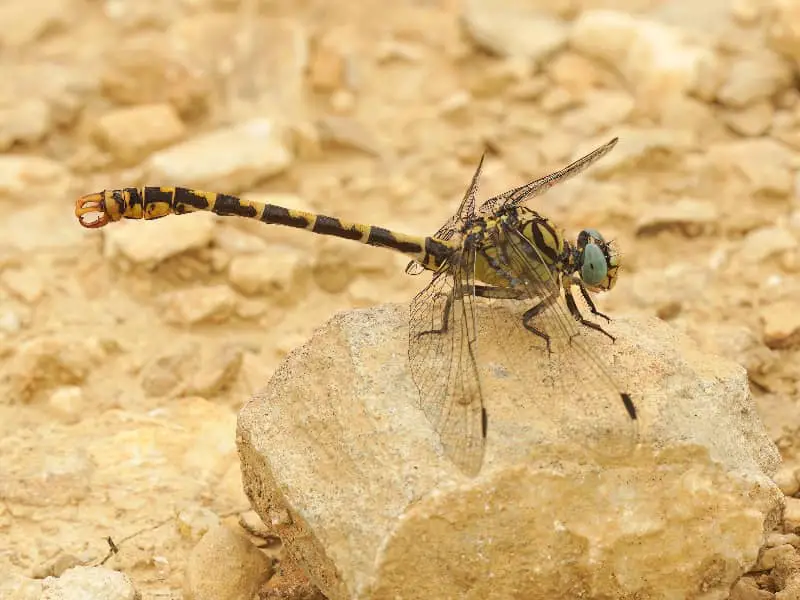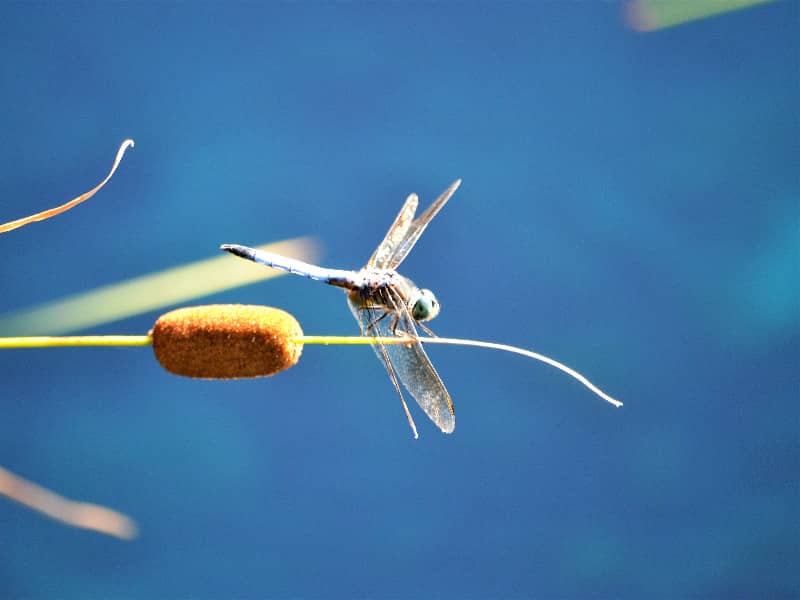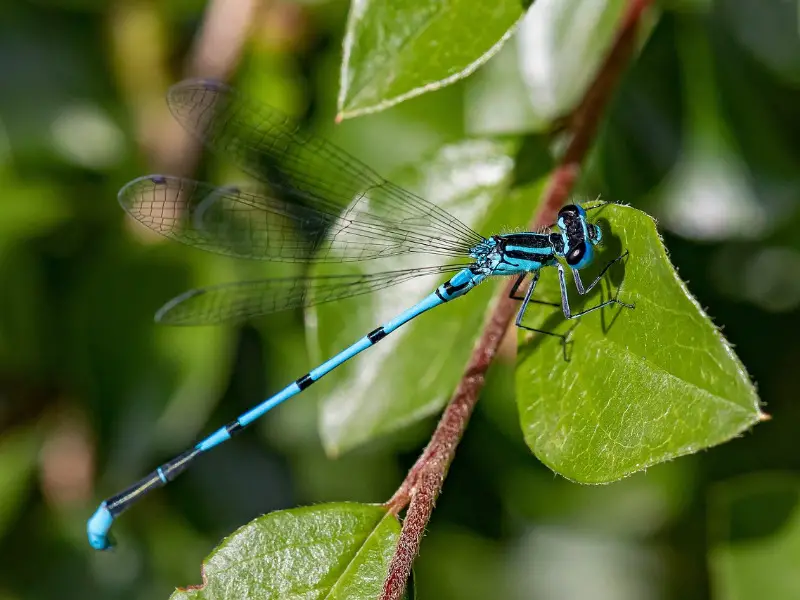
Blue feather damselfly
The blue damselfly, also known as Platycnemis pennipes, is a fascinating dragonfly species native to Europe. With its striking blue body and delicate wings, it is a real eye-catcher. In this article, we will take a closer look at the physical characteristics, habitat, behavior and feeding habits of this fascinating dragonfly species. We will also discuss the threats and conservation measures for the blue feather dragonfly and share interesting facts about them. So if you want to learn more about this beautiful dragonfly, read on!
- Blue feather damselfly
- Physical characteristics of the blue feather damselfly
- Blue damselfly - habitat and distribution
- Life cycle of the blue damselfly
- Behavior and feeding habits of the blue damselfly
- Predators and threats of the blue damselfly
- Protective measures for the blue-winged damselfly
- Interesting facts about the blue damselfly
- How to spot and photograph the feather dragonfly
- Conclusion
- FAQ
Physical characteristics of the blue feather damselfly
The blue damselfly is characterized by its bright blue color, which can be found in both males and females. Its body is slender and long and can reach a length of up to 4 cm. The wings of the blue damselfly are transparent. There are fishbone-like spines on the middle and hind legs. These have a feather-like appearance and gave this dragonfly species its name. Due to its physical characteristics, the Blue Feathered Dragonfly is easy to distinguish from other dragonfly species.
Blue damselfly - habitat and distribution
The blue damselfly is widespread throughout Europe and is found in various habitats. It prefers stagnant waters such as lakes, ponds and slow flowing rivers. The larvae of the blue damselfly live in water and need clean and clear water to develop. The adult dragonflies, on the other hand, stay near bodies of water and like to bask on plants and stones. The Blue-winged Dragonfly is a relatively common species, but it may be endangered in some regions due to environmental changes and habitat loss.
Life cycle of the blue damselfly
The blue damselfly goes through a fascinating life cycle consisting of several developmental stages. After mating, the female lays her eggs in the water. The eggs hatch into larvae that develop in the water. These larvae are predatory and feed on small insects and other aquatic animals. After a development period of several weeks, the larvae crawl out of the water and pupate on land. The pupae eventually hatch into adult dragonflies, which can then unfold their wings and fly. The entire life cycle of the blue damselfly usually lasts a year.
Behavior and feeding habits of the blue damselfly
The blue damselfly is an agile and skillful flyer. It uses its powerful wings to fly quickly and accurately. This dragonfly species is diurnal and can be observed near bodies of water where it is searching for food. The blue damselfly feeds mainly on small insects such as flies and mosquitoes. It catches its prey in the air and then eats them while flying. This behavior makes the Blue-winged Dragonfly an important part of the ecological balance in its habitat.
Predators and threats of the blue damselfly
Although the blue damselfly is a fascinating dragonfly species, it also has some natural enemies. Birds such as swallows and dragonfly eaters/bee-eaters feed on these dragonflies. Likewise, fish and other larger aquatic creatures may also eat the larvae of the blue damselfly. In addition to natural enemies, the Blue-winged Dragonfly is also threatened by habitat loss. Water pollution, draining of wetlands, and the use of pesticides can negatively impact the population of this dragonfly species.
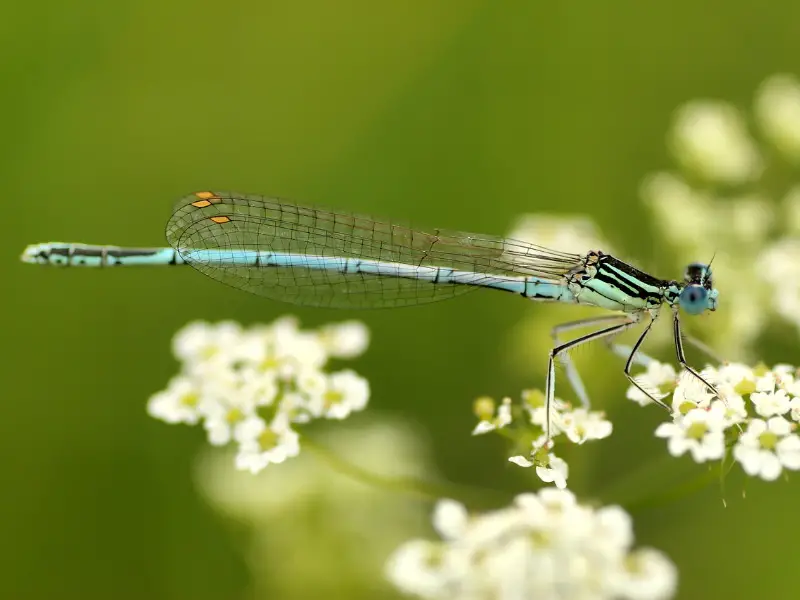
Protective measures for the blue-winged damselfly
A variety of conservation measures are needed to ensure the long-term protection of the blue-winged damselfly. The preservation and restoration of natural habitats such as ponds and wetlands are crucial. In addition, it is important to reduce water pollution and control the use of pesticides near water bodies. Programs are also being implemented at the national and international levels to monitor and protect the blue-winged damselfly in order to conserve its populations.
Interesting facts about the blue damselfly
- The blue damselfly is one of the few dragonfly species where the male and female have the same bright blue color.
- This dragonfly species can reach a speed of up to 30 km/h.
- The blue damselfly has a life expectancy of about 6-8 weeks.
- During mating, males of the Blue-winged Dragonfly form mating hearts to attract females.
- The blue damselfly is an important pollinator of plants in its habitat.
How to spot and photograph the feather dragonfly
The Blue Feathered Dragonfly can be spotted near bodies of water, especially in sunny and open areas. To spot this fascinating dragonfly, proceed slowly and quietly so as not to startle it. Look for their bright blue color and distinctive wings. If you want to photograph the Blue Feathered Dragonfly, it is advisable to use a camera with a telephoto lens so as not to get too close. Make sure you have good lighting and try to photograph the dragonfly in a natural environment.
Conclusion
The blue damselfly is a fascinating dragonfly species that impresses with its bright blue color and filigree wings. Its habitat and distribution are closely associated with clean waters and wetlands. To ensure the long-term protection of this fascinating dragonfly species, measures are needed to preserve and restore its habitats. If you have the opportunity to spot and photograph the Blue-winged Dragonfly, you will surely be impressed by its beauty and grace. Go in search of this fascinating dragonfly and enjoy nature in its full glory!
FAQ
Question: Is the blue-winged damselfly endangered?
Response: The Blue-winged Dragonfly is endangered in some regions, due to environmental changes and habitat loss. However, measures are being taken to protect and conserve their populations.
Question: How big does the blue damselfly get?
Response: The blue damselfly can reach a length of up to 4 cm, and both males and females can reach this size.
Question: What does the blue damselfly eat?
Response: The blue damselfly feeds mainly on small insects such as flies and mosquitoes. It catches its prey in the air and eats them during flight.
Question: How long does a blue damselfly live?
Response: The blue damselfly has a life expectancy of 6-8 weeks.
Author
Last posts
- 15. March 2024ChickensRobuster Kunststoffzaun für Hühner – Tipps
- 13 October 2023DragonfliesBlue feather damselfly
- 12 October 2023DragonfliesYellow dragonfly - What are the species?
- 12 October 2023DragonfliesEarly Adonis Damselfly

